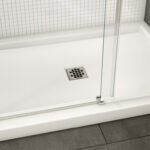Last updated on February 28th, 2024 at 04:26 am
The succulent plant is drought-tolerant. It stores water in its thick, fleshy leaves for food and reproduction during periods of insufficient rainfall. They are adapted to grow with very little moisture from the soil or groundwater, relative to other plants.
They typically have a large thick leaf that acts as an efficient water storage organ, such as the jade plant found onyx or haworthia species whose broad leaves serve to store water so they can better tolerate droughts.
Most succulents are extremely easy to care for because they thrive on neglect. The best part about succulents is how aesthetically pleasing they are – adding some succulents around your home will give it a simple, natural touch while also serving as decoration. They come in many colors and shapes so you’re sure to find one suitable for your home decor style!
Different types of succulent plants
Haworthia
Haworthias are native to South Africa, making it one of the few places on Earth where there are true succulents indigenous to the area. Haworthia is named for its first recorded botanist Adrian Hardy Haworth.
Haworthia is extremely adaptable and can be grown indoors or outdoors with some variations. It is one of the more popular varieties of succulents that many people have in their homes. Haworthias are often smaller than traditional succulent plants, but they make up for this small size with their interesting leaf structures and vibrant colors.
Haworthia plant care is not too difficult once you understand some basic principles about how these plants grow. Haworthia succulent is very popular among collectors and specialists, who often trade new Haworthia varieties amongst each other.
Sempervivums
Sempervivums are one of those plants that have a fascinating appearance, It is a perennial plant that has a thick rosette that looks like a succulent. It can grow in various conditions, but Sempervivums prefer the rocky and dry areas in nature.
It can also be found in some places where snow falls in winter, It is one of succulents that can withstand extreme temperatures. It resists cold and tolerates a temperature as low as -30 degrees Celsius and Semps will not be affected by freezing even at night time or in winter.
Opuntia
Opuntia succulents are members of the family Cactaceae, best known for their cylindrical arms, which they use to store extra water and nutrients—the reason why they can withstand extreme conditions. They’re able to stay fresh under both extreme heat and coolness, making them must-have houseplants year-round.
A new generation of plants with style. A spiky succulent replacement for your own lawn, this prickly pear is fashionably bedazzled with beautiful eyes on every surface – perfect for any occasion.
Agave
The Agave is a beautiful succulent with wide, attractive leaves that will add lovely color to any dull space in your home. This is the perfect plant for anyone who’s been hesitant about starting a garden!
It is a versatile plant thriving in your indoor space. It’ll help brighten up any room in your house, office, or dorm. The moderate size makes it the perfect addition to any corner of your home that needs some extra “green.”
Benefits of Succulents in Your Home
Succulents are a beautiful addition to any home. Succulent gardens and arrangements can be created for use as décor, and succulent plants also offer many benefits for your home.
- Succulents grow well indoors – they do not need much natural light and they require less watering than other types of indoor plants.
- Succulents are low maintenance, making them great for those who tend to forget about their houseplants. They come in many different forms, so there is a style to suit every decorating taste.
- There is no mistaking the beauty of a succulent garden or arrangement – these gorgeous green beauties create living works of art that will delight you with their sculptural shapes and striking textures.
- Succulents are drought-resistant, which makes them ideal for indoor gardeners who tend to go on vacation for a few weeks out of the year.
- Succulent arrangements are easy to make yourself – simply grab some soil and your various succulents at your local nursery and arrange them in an interesting glass container.
- Succulents can be a fun and stylish way to add a little life to any room in your home. Succulent plants offer many benefits for indoor gardeners.
- Succulents grow well indoors – they do not need much natural light and they require less watering than other types of houseplants.
Succulent plants need less watering than other types of indoor plants. They also come in many different forms, so there is a style to suit every decorating taste. Whether you prefer spiky blue echeveria, fleshy jade leaves, or colorful stapelia flowers, succulents serve as striking standalone pieces or pair well with other houseplants
Conclusion:
The succulent is a type of plant that’s been popular for a little while now. It grows well in a wide range of environments and has an interesting shape, making it the perfect home décor accessory. Whether you want to add some life to your living room or bedroom with these low-maintenance plants, there are many varieties of succulents plants online from which to choose. Let me know what types you like best!
















